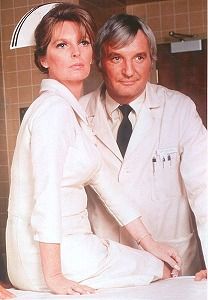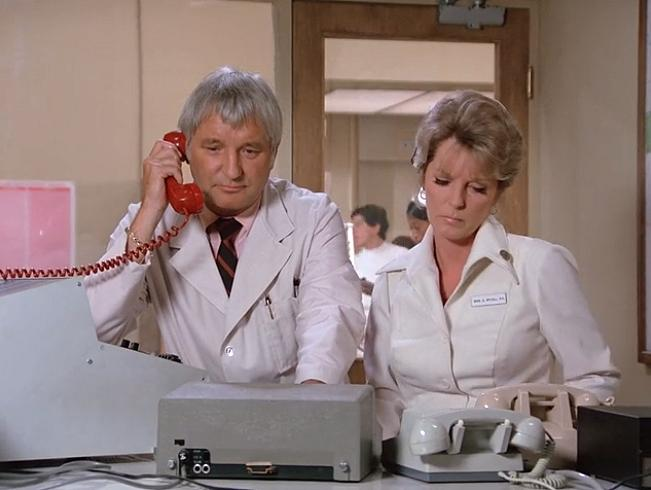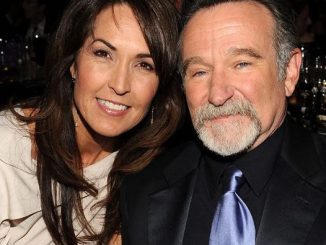If you’re a fan of classic TV, the name Emergency! likely rings a bell. This groundbreaking American action-adventure medical drama made its debut in 1972, bringing the high-stakes world of paramedics and emergency medical services (EMS) to the small screen. Created by Robert A. Cinader and produced by Jack Webb, Emergency! quickly became a cultural phenomenon, not only for its gripping stories but also for its role in popularizing paramedics and EMS across America.
The series ran for a total of 122 episodes until 1977, and even after its regular run, it continued to captivate audiences through a series of made-for-TV movies. But what made this show so special? Let’s dive into the details that made Emergency! a timeless classic.
The Unique Premise of “Emergency!”

Unlike traditional medical dramas that focused on hospital settings, Emergency! put paramedics at the heart of the action. Set in Los Angeles, the series followed the lives of Squad 51, a rescue team within the Los Angeles County Fire Department. This team, consisting of paramedics Roy DeSoto (Kevin Tighe) and Johnny Gage (Randolph Mantooth), worked tirelessly to provide medical care and perform rescues, such as vehicle extrications, from emergency scenes.
The show was one of the first to give audiences a look into the world of EMS, where paramedics weren’t just ambulance drivers, but skilled healthcare professionals working in the field. This focus on paramedics was revolutionary at the time and is one of the reasons Emergency! holds such a significant place in television history.
Iconic Cast and Characters
At the core of Emergency! were two of TV’s most beloved characters: Johnny Gage and Roy DeSoto. Johnny, played by Randolph Mantooth, was a young, good-hearted paramedic with a penchant for getting into trouble. In contrast, Roy, played by Kevin Tighe, was the calm, collected, and more experienced member of the team. The dynamic between the two provided both dramatic tension and comic relief, keeping audiences engaged throughout the series.
Supporting the main duo was a stellar cast of characters, including Dr. Kelly Brackett (Robert Fuller), head nurse Dixie McCall (Julie London), and neurosurgeon Dr. Joe Early (Bobby Troup). These characters were pivotal in portraying the medical aspect of the show, offering a balance between the emergency rescue operations and the hospital setting. The chemistry between the paramedics and the medical staff at Rampart General Hospital helped to create a comprehensive look at the world of emergency care.
Other notable characters included firefighter Chet Kelly (Tim Donnelly), paramedic Marco Lopez (Marco Lopez), and Engine 51 driver Mike Stoker (Mike Stoker). Together, this team represented the best of both the fire and medical worlds, and their interactions helped to highlight the camaraderie that’s so vital in emergency services.
How “Emergency!” Popularized EMS
When Emergency! first aired, paramedics were still a relatively new concept in the United States. The role of paramedics was still evolving, and many people were unfamiliar with the skills and training required to perform advanced medical procedures outside of a hospital. Emergency! not only showcased the heroism of paramedics but also educated the public about their vital role in saving lives.
The show’s realism was one of its strongest suits. The series featured technical advisors, including EMS pioneer James O. Page, who ensured that the medical procedures and rescues were as authentic as possible. The actors even underwent paramedic training to accurately depict the life-saving skills of their characters. This attention to detail helped to elevate the show’s credibility, making it a powerful educational tool for the public.

In fact, the impact of Emergency! was so significant that it inspired real-world changes in EMS practices. Local municipalities and states began expanding their EMS coverage and improving training for paramedics. Emergency! played a crucial role in reshaping how the public viewed emergency medical services and paramedics, helping the profession gain recognition and respect.
The Show’s Lasting Legacy
Even though Emergency! ended its original run in 1977, its influence can still be felt today. The show’s depiction of paramedics and EMS helped to normalize the concept of pre-hospital care, which was an emerging field at the time. Today, paramedics are integral to emergency response teams, and their work is often as important as that of doctors and nurses.
In recognition of the show’s impact, the Smithsonian Institution accepted memorabilia from Emergency! into its National Museum of American History in the late 1990s. Items such as the firefighters’ helmets, Biophone, and defibrillator are part of the museum’s public-service collection, underscoring the show’s contribution to American culture. The vehicles from Station 51 are also preserved at the Los Angeles County Fire Museum, ensuring that the legacy of Emergency! lives on for future generations.
Emergency!’s Cultural Impact and Popularity

What made Emergency! stand out from other TV shows of its time was its ability to blend action, drama, and medical knowledge in a way that felt both exciting and educational. While the show’s primary focus was on emergency rescue operations, it also explored the personal lives of the characters, adding emotional depth and complexity. Fans grew attached to the characters, which helped the series maintain its popularity long after it ended.
Additionally, Emergency! wasn’t just a medical drama—it was a social phenomenon. It addressed real-world issues, from the challenges of working in emergency services to the mental and emotional toll that such a job can take. The show’s ability to tackle these themes with both sensitivity and accuracy helped it resonate with viewers, making it a favorite for decades.
Conclusion: A Timeless Classic
Emergency! is more than just a TV show—it’s a cultural touchstone. By bringing paramedics into the limelight and offering a realistic portrayal of EMS, the series helped shape how emergency services are viewed in America. From its memorable characters to its gripping storylines, Emergency! remains a classic that continues to inspire new generations of viewers.
The show’s legacy is not only preserved in memorabilia and museum collections but also in the way modern TV dramas continue to explore the world of emergency services. As we look back on Emergency! with fondness, it’s clear that this action-packed, heart-pounding series was far more than just entertainment—it was a catalyst for change.


